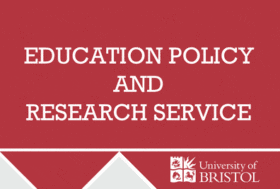Supporting students with English as an Additional Language (EAL): Selected reading


Supporting students with English as an Additional Language (EAL) : Selected reading
Teaching assistants have an important role to play in supporting children and adolescents with English as an Additional Language (EAL). Students with EAL are not a homogeneous group. In fact, they are a diverse group, encompassing a range of English language proficiency, from those who are new to the language to those who are fluent. This reading list provides resources and guidance to support students with EAL at different stages of their language acquisition journey. It also provides more specific resources for the following groups of students including:
- Newly arrived students with EAL (including refugees and asylum seekers)
- Students with limited first language literacy
- EAL students with SEND
- Advanced EAL students
The Bell Foundation
The Bell Foundation is a charity which aims to overcome exclusion through language education by providing a range of high-quality, evidence-based guidance and resources for those supporting students with EAL, including:
- A brief outline of EAL provision in the United Kingdom since 1966.
- An EAL Assessment Framework for EYFS , primary and secondary students. These will help you to identify the specific needs of your students and effectively track their progress. It also provides an accompanying list of classroom strategies to support planning and future assessment.
- A range of subject-specific and phase-specific resources to support the planning and resourcing of lessons. They also provide guidance for supporting EAL students in maths and science.
- A range of phase-specific homework ideas to support EAL students with learning at home.
- A range of guidance and practical strategies specifically for teaching assistants working with students with EAL.
- An overview of effective pedagogical approaches to use when supporting students with EAL.
- Guidance on how best to use bilingual dictionaries in the classroom.
- Access to a variety of webinars throughout the academic year, providing support and guidance on how best to support EAL students in the classroom.
- A range of research reports that underpin approaches to teaching and learning in EAL education.
- A range of ‘great ideas’ to support students with EAL at different stages of their learning journey.
- Guidance for parents about the English education system (both primary and secondary). This is available in 22 different languages.
- A course (paid) specifically designed for teaching assistants supporting primary school students with EAL.
Newly arrived students with EAL (including refugees and asylum seekers)
The term ‘new arrivals’ refers to a diverse group of students, whose proficiency in English may vary. The term usually refers to ‘children who are international migrants including refugees, asylum seekers, children of people working or studying in England and economic migrants from overseas’ (The Bell Foundation, 2022). The term is generally applied to students who arrive from countries outside the UK, rather than from another school within the UK. The guidance and resources below will support you to meet the diverse needs of this group.
- The Bell Foundation provides a range of guidance and resources for teaching staff supporting newly arrived students with EAL.
- The Bell Foundation provides a range of guidance and resources specifically designed to support refugees and asylum seeker students.
- The Bell Foundation provides guidance and practical strategies to support Afghan refugee children and young people in schools. They also provide this webinar which includes further guidance and support for teaching staff.
- This article provides context, guidance and practical strategies to support Ukrainian refugee children and young people in schools. At the end, it also provides a list of organisations and resources to further support these students. The Bell Foundation also provides a webinar which includes further guidance and support for teaching staff working with Ukrainian refugees.
- This British Council podcast explores how to effectively teach refugees, migrants and internationally displaced people. This podcast discusses how to create an inclusive classroom.
- UNHCR’s ‘Teaching about Refugees’ page provides a range of high-quality and adaptable resources. Most notably, they provide guidance for primary and secondary teaching staff on how best to support refugee children and young people, both academically and pastorally.
- UNHCR has compiled a list of books about the experiences of refugees, most of which are written by refugee authors.
- Amnesty International has compiled a list of books that explore the experience of refugees and asylum seekers. They have also produced accompanying lesson plans, discussion points and activities relating to each book.
- The National Literacy Trust provides a reading list that includes stories celebrating the contributions, creativity and resilience of refugees and people seeking sanctuary.
- The International Rescue Committee provides up-to-date information about recent global crises. They also provide advice on how to support people who have experienced these.
- Refugee Education UK provides a range of reports, toolkits and resources to support refugee students.
- Refugee Education UK provides a free newsletter to stay up-to-date with the latest refugee education news. Subscribe here.
- Phoenix provides a range of downloadable resources to support newly arrived students.
- Amnesty International provides up-to-date news and information relevant to migrants and refugees.
- The Association of Child and Adolescent Mental Health (ACAMH) provides this podcast that discusses how best to support refugee students in educational settings.
- Twinkl provides guidance and resources to support new arrivals in the classroom.
- For more information about supporting new arrivals in general, both in primary and secondary schools, the following guidance, although no longer official government policy, is useful and comprehensive.
- This Flash Academy article offers practical strategies to support refugee children and young people develop confidence in a new educational setting.
- This Realising Equality and Achievement for Learners (REAL) article offers six key strategies for supporting newly arrived students with EAL.
Students with Limited First Language Literacy
These students may enter into the English education system with limited experience of schooling and no literacy, or limited literacy skills in any language, including their first language.
- The Bell Foundation provides guidance for teaching staff supporting students with limited experience of schooling or limited first language literacy.
- The Bell Foundation provides guidance on how best to conduct a home language assessment.
EAL students with Special Educational Needs or Disabilities (SEND)
Having ‘English as an additional language’ is not considered a Special Educational Need (SEN). However, students with EAL may have additional educational needs, similar to their peers who have English as a first language. It can be difficult to identify the specific learning needs if a student does not have a high level of proficiency in English. The guidance and resources below will support you to identify additional needs in students with EAL and offer practical strategies to address them.
- The Bell Foundation provides guidance and resources to support EAL students with SEND.
- Tony Cline & Tatheer Shamsi’s (2000) report ‘Language needs or special needs?’ provides a comprehensive review of assessment and provision for EAL students with possible additional needs. The findings on pages 56-61 may prove most useful.
- Rosamond, S. et al. 2003 report ‘Distinguishing the difference: SEN or EAL’ provides a step-by-step guide for identifying the learning needs of students with EAL.
- This Twinkl article outlines how educators can identify SEND in EAL students and offers a range of strategies that can be put in place to support them.
- This Flash Academy article provides nine tips to help teaching staff to identify SEND in EAL students.
- This guidance, provided by Oxford County Council, aims to support teaching staff in Early Years settings to identify SEND in EAL children.
- This REAL article provides guidance about how to assess and support EAL learners with possible SEND.
Advanced EAL students
OfstedThe Office for Standards in Education, Children’s Services... More (2005) define advanced EAL students as: “Pupils who have had all or most of their school education in the UK and whose oral proficiency in English is usually indistinguishable from that of pupils with English as a first language but whose writing may still show distinctive features related to their language background’. The guidance and resources below will support you to meet the needs of this group. However, these strategies will also work towards supporting all students.
- The Bell Foundation’s EAL Assessment Framework for EYFS , primary and secondary students will help you to accurately identify a student’s proficiency level.
- This guidance, provided by Cumbria City Council, offers a comprehensive guide for those supporting advanced EAL students. It also provides a range of practical strategies to support language development, more specifically it outlines possible language misconceptions and offers approaches to address this. It also offers guidance specifically designed for teaching assistants working with advanced EAL students.
- This SecEd article provides practical guidance and strategies for supporting advanced EAL students.
- This 2005 Ofsted report outlines good practice when supporting advanced EAL learners with their writing at Key Stage 2. Page 4 offers key recommendations for schools and page 7 outlines specific recommendations for teaching assistants.
Other general resources and guidance:
- The National Association for Language Development in the Curriculum (NALDIC) promotes the development of research, policy and practice in EAL education. They organise conferences and events, facilitate professional networks and produce a variety of publications, including the popular and influential termly EAL Journal. Visit their website here.
- Robert Sharple’s (2021) ‘Teaching EAL: Evidence-based Strategies for the Classroom and School’ contains an excellent summary of the current context and outlines what the best EAL practitioners are doing.
- Hamish Chalmers’ (2022) ‘English as an Additional Language: An Evidence-Informed Guide for Teachers’ provides an excellent summary of the best available research in EAL education.
- Jo Hutchinson’s 2018 report ‘Educational Outcomes of Children with English as an Additional Language’ examines the attainment of students with EAL in England. It also evaluates the impact of funding and provision for EAL students.
- The chapter entitled ‘English as an Additional Language’ in Sameena Choudry’s book, Equitable Education, provides a comprehensive overview of EAL education in England with a range of evidence-informed classroom strategies to support students with EAL.
- This Department of Education (DfEDepartment for Education - a ministerial department responsi... More) report analyses data collected in the 2018 school census regarding English proficiency of pupils with EAL.
- The British Council provides a range of activities and resources to support primary and secondary students with EAL. They also provide a wealth of resources to support teachers and teaching assistants with lesson planning and delivery at both primary and secondary level.
- This British Council report evaluates experiences of secondary school students with EAL. A summary of the findings can be found on pages 27-28.
- This British Council report evaluates EAL practice in UK primary schools. The implications and recommendations of this report can be found on pages 15-16.
- The National Literacy Trust provides a useful glossary of terms associated with EAL teaching. Within this, there is a very useful overview of the ‘EAL stages of proficiency’.
- The National Literacy Trust provides a useful video outlining 50 classroom strategies to support students with EAL.
- The National Literacy Trust provides practical guidance to support the development of reading.
- Twinkl provides an article (with accompanying resources) with top tips for teaching assistants when supporting students with EAL.
- This Flash Academy article may be useful for those new to supporting students with EAL. It clearly defines a range of key terms and acronyms used in EAL education.
- The British Council provides a range of activities and resources to support primary and secondary with EAL. They also provide a wealth of resources to support teachers and teaching assistants with lesson planning and delivery at both primary and secondary level.
- Flash Academy provides a wealth of subject-specific resources to support students with EAL across different phases. They also provide a range of videos to support grammar teaching.
- Twinkl provides resources and guidance for those supporting students with EAL in an Early Years setting.
- Oak Academy provides a wealth of subject-specific and phase-specific resources that can be translated into a variety of languages.
- This article provides a comprehensive overview of EAL education in the UK with a range of practical strategies to support students with EAL in the classroom.
- This SecEd article provides an overview of the distinctive needs of EAL students with suggested approaches to meet these needs.
- This Flash Academy article provides a range of strategies to support students with EAL to overcome the ‘silent phase’.
- Flash Academy suggests a range of extra-curricular activities that may support language development, including playing music, playing video games and taking part in drama activities.
- This Flash Academy article outlines how teaching staff can support students with EAL in maths lessons. This article gives an overview of the challenges that students with EAL may experience in maths and offers practical strategies to overcome these.
- This Flash Academy article highlights the importance of using EAL students’ first language abilities in lessons.
- This REAL article provides a step-by-step guide to scaffoldingProgressively introducing students to new concepts to suppor... More the secondary curriculum for students at the early stages of language acquisition. It provides some excellent examples of scaffolding the geography curriculum.
- This SecEd article provides guidance and practical strategies for teaching students with EAL in language-heavy subjects (English Literature, History, Geography and Religious Education).
References
The Bell Foundation (2022) ‘New Arrivals’ (online) https://www.bell-foundation.org.uk/eal-programme/guidance/diversity-of-learners-who-use-english-as-an-additional-language/new-arrivals/ (accessed on 08.11.2022)
Ofsted (2005) ‘Could they do even better? The writing of advanced bilingual learners of English at Key Stage 2’ (online) https://dera.ioe.ac.uk/5384/1/Couldtheydoevenbetter.pdf (accessed on 08.11.2022)









